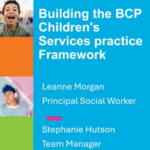by Carolyne Willow, Article 39
Since 2011 staff in secure children’s homes have been banned from using restraint techniques that deliberately inflict pain. Yet, incredibly, no such protection exists when children are being escorted to and from these very same services.
Escort custody officers are authorised to inflict pain as a form of restraint. Last year, the Youth Justice Board announced its secure escort contractor was using a behavior management approach known as Minimising and Managing Physical Restraint (MMPR).
MMPR was developed for child prisons in response to the restraint-related deaths of two children. Gareth Myatt, 15, and Adam Rickwood, 14, died in secure training centres run by G4S and Serco respectively.
Gareth died in April 2004 after choking on his own vomit while he was held down. G4S officers had forced him into a seated position and bent his upper body towards his thighs and knees. They ignored his cries that he couldn’t breathe. Gareth lost consciousness within six or seven minutes.
Four months later Adam died after being unlawfully restrained for refusing to go to his room. He was inflicted with a ‘nose distraction’; a prison service restraint technique involving an upward strike to the nose with the intention of causing severe pain. Adam took his own life hours later, leaving a note for his solicitor to say he had asked staff what gave them the right to hit a child on the nose.
The specific techniques used on Gareth and Adam were eventually permanently withdrawn from child prisons and are not permitted under MMPR.
But the use of other painful restraint methods remains allowed and has persisted despite calls for a ban from UN bodies, the prisons inspectorate, the NSPCC and the UK’s four Children’s Commissioners.
Two former directors of social services conducted an independent review of restraint in 2008 for the former Labour government. At the time, the Department of Health gave evidence that it believed young people displaying challenging behavior “could be successfully managed without restraints or methods involving pain compliance”.
MMPR was developed against this near universal rejection of painful restraint. However, in a report for the Ministry of Justice, the independent board established to advise on the safety of techniques said those devising MMPR were never asked “to consider developing the option of a restraint system that involved no-pain inducing techniques.”
Moreover, the report explains that the board were not asked to advise on the safety of techniques during escorts: “This is a complex area involving a variety of escorting agencies and vehicles used and the [advisory board] is in no position to comment upon the suitability of any techniques in MMPR for such purposes”.
This means children who are escorted to secure children’s homes can be subject to techniques like the “waist restraint belt”, which the Home Office banned immigration officers from applying to pregnant detainees last year.
The MMPR techniques have been reviewed by the prison service’s independent medical advisor. Last year, through freedom of information requests, I obtained the medical assessments. This rated scenarios against a five-point scale of risk. Twenty-eight of the 66 scenarios considered scored 2 out of 5 on the potential for “catastrophic” injuries or death.
The accompanying letter advised: “To date there has been no recorded serious injuries or warning signs recorded from the escort services”, which frankly was not reassuring.
There is plenty of evidence on children’s experiences of restraint. The NSPCC, for example, asked 19 children in custody about the use of restraint. The children described being twisted up, gripped up, ragged up, jumped on and hammered. On the use of pain, one child said: “It makes me angry and I cry”.
The encroachment of penal policy on children in secure children’s homes is a significant and dangerous step. That’s why Article 39 is running a crowdfunding appeal to launch a legal challenge against the use of painful restraint on children during the escort process.
This is not to condone the infliction of pain on children in prisons: they should be fully protected too. But those institutions are under the domain of the Ministry of Justice and the Youth Justice Board. Neither has conceded that children can be looked after, and very difficult behavior managed, in these settings without ever having to resort to painful restraint.
Some of our youngest and most vulnerable children are sent to secure children’s homes. Their journey to and from there can be frightening enough. We believe legal proceedings could bring about greater protections and end the disparity between the safeguards in place when they reach a children’s home, and those they have on the journey there.
It took four and a half years to get an answer to Adam Rickwood’s question of why staff had the right to hit him on the nose. In a case brought by Adam’s mother, Mr Justice Buxton said: “There was no right to hurt such a child in these circumstances”. Please back our appeal.



 Bournemouth, Christchurch and Poole
Bournemouth, Christchurch and Poole  Hampshire County Council
Hampshire County Council  Oxfordshire County Council
Oxfordshire County Council  South Gloucestershire Council
South Gloucestershire Council  Wokingham Borough Council
Wokingham Borough Council  Webinar: building a practice framework with the influence of practitioner voice
Webinar: building a practice framework with the influence of practitioner voice  ‘They don’t have to retell their story’: building long-lasting relationships with children and young people
‘They don’t have to retell their story’: building long-lasting relationships with children and young people  Podcast: returning to social work after becoming a first-time parent
Podcast: returning to social work after becoming a first-time parent  How managers are inspiring social workers to progress in their careers
How managers are inspiring social workers to progress in their careers  Workforce Insights – showcasing a selection of the sector’s top recruiters
Workforce Insights – showcasing a selection of the sector’s top recruiters 

 Facebook
Facebook X
X LinkedIn
LinkedIn Instagram
Instagram
We need properly funded public services where the staff are fully trained and given all the supervision and support that they need in doing this difficult and challenging work.
The idea that we could have saved a few bob by outsourcing this type of work to G4S and Serco was always going to be a recipe for disaster.
Here’s my reply – https://www.youtube.com/watch?v=mphjr3T8IBg
This would be a misguided and dangerous law to have passed – pain compliance is an essential tool and one which can save lives & reduces injuries to staff and children.
The less effective systems of restraint are the more at risk children and staff are – I understand your angle however a complete ban isn’t the way forward. I’d be happy to work with you on this and urge you to get in touch to discuss how best legally to approach this?
Here is a short clip I put together some time ago from our toolbox talks DVD
https://youtu.be/fFfsDJPcs68
Having watched this youtube video I feel that it offers a well reasoned argument for professionals being skilled in using particular methods to benefit the safety of the child and the staff.
The point that struck me most was Doug’s argument that if you are given an ineffective strategy there is a significant chance that you will revert to panic and self preservation mode which will not lead to good outcomes. He gives the particular good example that if a Police officer is given a strategy that does not work, they will revert to headlocks etc as they become fearful for their lives. Whereas what they need are to be trained in methods which are most effective.